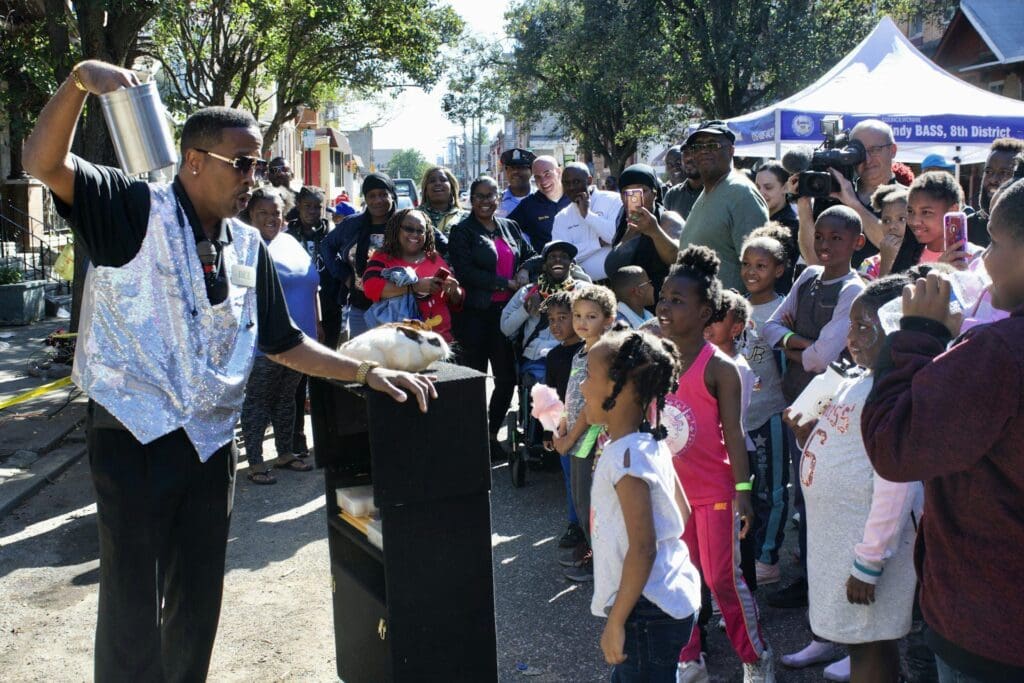Block parties – a beloved summer tradition in many Philadelphia neighborhoods – can lead to small increases in voter turnout among Philadelphia residents.
In a new peer-reviewed study published in the Urban Affairs Review, my colleagues and I found that Philadelphia residents who lived on blocks that held at least one party in 2012 were almost 2 percentage points more likely to vote in that year’s presidential election than those who lived on blocks that did not host any parties that year.
We merged data from the city on the number of permits granted for block parties between 2006 and 2016 with turnout data from Philadelphia voter rolls and neighborhood demographics drawn from the U.S. Census.
We focused on the 2012 election cycle rather than 2008 or 2016 because Philadelphia residents voted at unusually high rates in 2008 and Pennsylvania was considered a battleground state in 2016, which might have led campaigns to focus more attention and resources on Philadelphia voters.
Although the increases in turnout that we found were small, they were larger than those produced by costly get-out-the-vote initiatives, which some scholars argue have little to no effect on turnout.
We also found that block parties are a more effective voter mobilization tool in Black neighborhoods, compared with mostly white, Asian or Latino neighborhoods.
Block parties are important social gatherings within Philadelphia communities.
A 2016 mapping project by the Philadelphia news outlet WHYY showed that thousands of parties occurred each year in neighborhoods throughout the city – though that number has declined over the past 15 years. According to Axios Philadelphia, the city issued 2,511 permits for block parties in 2023, compared with 4,276 in 2018 and 7,700 in 2008.
Vice President Kamala Harris and former President Donald Trump are in a statistical tie in the polls. Political campaigns and nonpartisan civic organizations are spending a lot of money and effort to get out the vote in 2024. For example, in August, shortly after Harris entered the race, her campaign spent US$174 million on trying to get people to the polls. The Trump campaign spent $61 million on those efforts during the same month.
Our research shows that social events like block parties, though not explicitly political, could slightly increase voting in urban neighborhoods.
Looking to the future, campaigns and organizations may consider investing in more neighborhood events that strengthen community bonds alongside initiatives directly aimed at voter turnout. The nonprofit Civic Responsibility Project, for example, is organizing get-out-the-vote dance parties in cities across the country, including Philadelphia. Such events may strengthen social ties between neighbors and might be especially important in minority communities, where residents are less likely to vote.
We don’t yet understand how events like block parties increase voter turnout, but we suspect it happens because they provide neighbors with opportunities to get to know each other. Once social ties are formed, neighbors provide each other with information about politics, including voter registration dates and polling place locations.
We also don’t know whether these findings apply in cities beyond Philadelphia, to election years besides 2012, or to other types of neighborhood events. We expect that block parties and other community events have the power to increase voting in cities across the country; however, more research is needed to be sure.
This study was part of an interdisciplinary project that brought together political scientists and city planning researchers. The collaborative effort allowed us to combine spatial mapping and statistical analysis techniques that are commonly employed in our respective fields but rarely used together.
The Research Brief is a short take on interesting academic work.
This article is republished from The Conversation, a nonprofit, independent news organization bringing you facts and trustworthy analysis to help you make sense of our complex world. It was written by: Tanika Raychaudhuri, Rice University
Read more: I analyzed 3,356 signs to see how language use is changing in three Latino neighborhoods in Philly Happiness swings votes – and America’s current mood could scramble expectations of young and old voters Most young voters support Kamala Harris − but that doesn’t guarantee they will show up at the polls
Tanika Raychaudhuri does not work for, consult, own shares in or receive funding from any company or organization that would benefit from this article, and has disclosed no relevant affiliations beyond their academic appointment.
